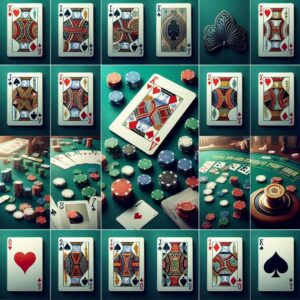
In the high-stakes world of casino poker,Psychology in Casino Poker the ability to read your opponents—understanding the subtle signals and tells that betray their intentions—can be just as important as the cards you hold. “Reading the Tells: A Guide to Human Psychology in Casino Poker” delves into this intricate aspect of the game, offering insights into how mastering the art of observation can tilt the odds in your favor.
The Basics of Tells
A “tell” in poker is any change in a player’s behavior or demeanor that provides clues about their hand’s strength or weakness. These can range from physical gestures, like touching one’s face, to changes in betting patterns. Understanding tells requires keen observation and an understanding of human psychology, as well as an awareness of how players may try to deceive or mislead their opponents intentionally.
Physical Tells: The Unconscious Signals
Physical tells are involuntary reactions that are difficult to control. They can include anything from a rapid heartbeat visible in the neck to a slight tremor in the hands. Some players may suddenly hold their breath when bluffing, while others might blink more frequently when holding a strong hand. Learning to notice these subtle signs requires practice and a detailed understanding of human body language.
Verbal Tells: Words as Windows
Verbal communication at the poker table can also provide a wealth of information. The tone of voice, speed of speech, and even specific word choice can reveal a player’s confidence or uncertainty. A player who suddenly becomes chatty with a strong hand or unusually quiet with a weak one might be unwittingly giving away vital information. Discerning truth from deception in these verbal cues is a critical skill in poker psychology.
Betting Patterns: The Strategy Tell
Betting patterns are among the most reliable tells because they directly relate to the game’s strategy. Changes in a player’s usual betting behavior can indicate a shift in the strength of their hand. For instance, a player who typically bets aggressively but suddenly hesitates or makes a smaller bet may not be as confident in their hand as they want to appear. Recognizing these patterns requires a deep understanding of poker strategy and an ability to remember past actions.
Psychological Warfare: Bluffs and Double Bluffs
At the higher levels of play, understanding tells becomes a game of psychological warfare. Experienced players are aware of their tells and may use them to their advantage, intentionally giving false signals to mislead opponents. This layer of strategy adds complexity to reading tells, where the ability to distinguish between genuine signals and intentional deceits becomes paramount.
Developing Your Skills
Mastering the art of reading tells in casino poker is a gradual process that involves observing not just your opponents but also yourself. Awareness of your tells and learning to control or mask them can prevent others from gaining insights into your play. Additionally, spending time both playing and watching others play, ideally in diverse settings, can enhance your ability to read tells accurately.
Ethical Considerations
While reading tells is a legitimate part of poker strategy, it’s important to approach this aspect of the game with respect and ethical consideration. Using psychological insights to gain an advantage is part of the game, but it should never cross into personal manipulation or exploitation.
Conclusion
“Reading the Tells: A Guide to Human Psychology in Casino Poker” is not just about understanding the signals others give; it’s about delving deeper into the psychological aspects of poker. By developing a keen sense of observation and an understanding of human behavior, players can add a powerful tool to their poker arsenal. As with all skills in poker, practice, patience, and ethical play are key to mastering the art of reading tells.





